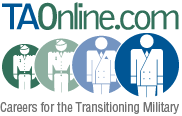Title:Successful Job Search: Today's Top 10 Dos and Don'ts
Author:Susan P. Joyce, © 2016 All rights reserved
Date:June 2016
Source:workcoachcafe.com
Effective job search methods have changed substantially, particularly in the last few years. What worked in the past (even two years ago) doesn't necessarily work now.
The Top 5 Job Search Don'ts —
We'll start with the do-not statements because making these very common mistakes causes loss of confidence and wastes time:
-
Do NOT hunt for your new job in isolation.
Job search often takes much longer now than it did in the past, usually because people don't understand that the traditional process no longer works. A solitary job search — just you and your computer — is a very tough job search.
Meeting with other job seekers helps you see that you aren't the only smart, capable person who is struggling with job search today. "Job clubs" and "buddy groups" can be effective in helping you understand what works and what doesn't work in the current job market, expanding your network of contacts and giving you experienced sets of eyes to look over your LinkedIn Profile and other job search documents.
Find a local job club by checking with your local public library, town hall, senior center (regardless of your age), or other public venue near you. Also check out Meetup.com to see if any meetings are regularly scheduled or to schedule your own.
-
Do NOT assume that employers' favorite way to fill a job is to post their job online.
Research shows an average of 250 people apply for every job posted online — making that method the toughest, most competitive method to connect with a new job.
The majority of employers prefer employee referrals to fill their job openings.
While the referred candidate may not be the best-qualified, employers know they are most likely to be successful because they already have support inside the organization.
[Read To Be Hired, Be Referred and How to Make Employee Referral Programs Work for You for more information on how referrals work.]
-
Do NOT be invisible online.
Many think that they are protecting their privacy by avoiding all online visibility. However, research shows the majority of recruiters Google job applicants. Typically, they are looking for a LinkedIn Profile that will confirm the job applicant really has the qualifications claimed on the resume or job application.
Finding nothing about you is a very bad sign — the "invisible" person is assumed to be out-of-date or hiding something.
-
Do NOT let your desperation show.
No matter how desperately you want a new job, do your best to keep your desperation hidden from potential employers and networking contacts.
Do NOT say "I'll take ANYTHING"
when asked what you are looking for in your next job.Successful job search today requires that you focus your job search on what you want and have your elevator speech ready when anyone asks what you are looking for.
Privately do Dr. Amy Cuddy's "power poses" before your next networking meeting or job interview to build your confidence and lift your spirits. They work.
-
Do NOT focus your job search efforts on creating the perfect resume.
Yes, your resume is important, but I see too many job seekers spending an enormous amount of time at home (hiding?), carefully crafting a "perfect" resume. Resumes are not as important as they were in the past.
What is more important is having a good idea of what you want next and presenting that clearly both online (LinkedIn) and in person.
Think of a resume as a sales flyer in an era when marketing is becoming more important and effective. Personal marketing (via a LinkedIn Profile) is essential for a successful job search today.
The Top 5 Job Search Dos —
Now, for the DO statements for successful job search today.
-
Make a plan. Know your target job title(s) and employers.
As Yogi Berra famously said, "When you come to a fork in the road, take it". Choose what you want to do next and where you want to work. Have one or two job titles you want (hopefully different names for the same job) and at least ten employers where you think you would like to work.
Being too flexible today is a mistake because the Internet has made millions of options visible to us. It's hard to choose jobs and employers with so many options, but you need to focus — or you will fail.
-
Do networking for fun as well as to benefit your job search.
Get back in touch with former bosses and colleagues, friends from college and your past lives (or last week). They are your best connections to a new job because they know you and understand your worth.
Meet them for coffee on the weekend or for a drink after work. Get together for a group "reunion" lunch or dinner. Catch up on what's been happening in their lives. See if there's anything you can do for them, and then see if there is anything they can do for you.
Notice that employers' favorite way to fill a job is through employee referrals? That's #4 above. Usually the employee who refers you is rewarded with $$ by the employer, often at least $500, so they benefit too.
-
Manage your online reputation.
Employers Google job applicants. Often, employers are impressed by what they find.
Of course, people are eliminated from consideration when demonstrating bad grammar and spelling; making nasty, mean, or inappropriate comments; and showing other negative behavior (trashing former employers, sharing confidential information, etc.).
-
Be easy for employers to find.
Being well-qualified for a job doesn't mean you will quickly land that job unless you can be found in an employer's search.
Whether they are confirming your resume or job application's facts or searching Google and LinkedIn for qualified candidates for their jobs, including the "right" keywords for you in your resume/application and social profiles is essential today.
Having a minimal LinkedIn Profile is almost as bad as no Profile. Without a robust Profile that contains the right keywords for your career and future job, your Profile won't be found. In addition, a Profile that does not contain a headshot photo is usually ignored in LinkedIn search results.
[Read To Be Hired, You Must Be Found Where Recruiters Look, 5 Reasons to Have a Headshot Photo in Your LinkedIn Profile, and To Be Hired, You Must Be Found: Your Best Keywords.]
-
Be well-prepared for job interviews.
Too many job seekers seem to think they can cruise easily to a job offer once they have received an opportunity to interview for a job. Wrong!
Your resume/application, professional online presence, and luck got you the job interview. The job interview is your opportunity to impress the employer enough to receive a job offer, or, at least, more consideration for the job.
So, do your research before the job interview to know what the employer does, where and how they do it. If you have been referred by an employee, you do have an "inside track" but you still need to have done your homework before the job interview.
Read The 5 Absolute MUST-ASK Questions in Your Next Job Interview for more information.
More About Successful Job Search
- 35 Ways Time Is Wasted in Job Search
- How to Answer the Top 10 Job Interview Questions
- Why Job Interviews May NOT Turn into Job Offers
- 5 Essential Components of a Successful LinkedIn Profile
- The LinkedIn Professional Headline Mistakes that Ruin Opportunities
- 3 Reasons You Are Not Getting Job Offers
- Build Your Confidence for Job Interviews in Less Than 5 Minutes

